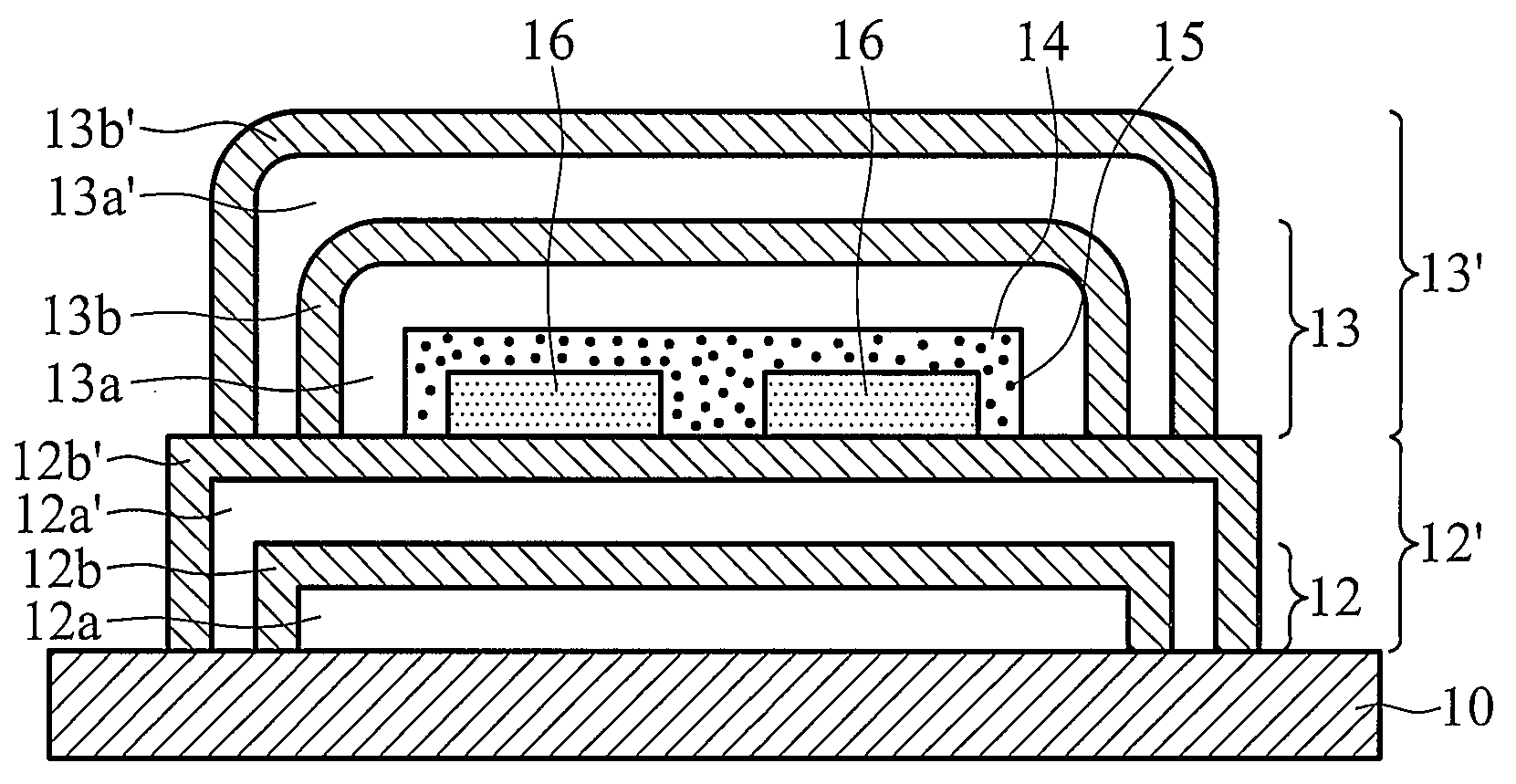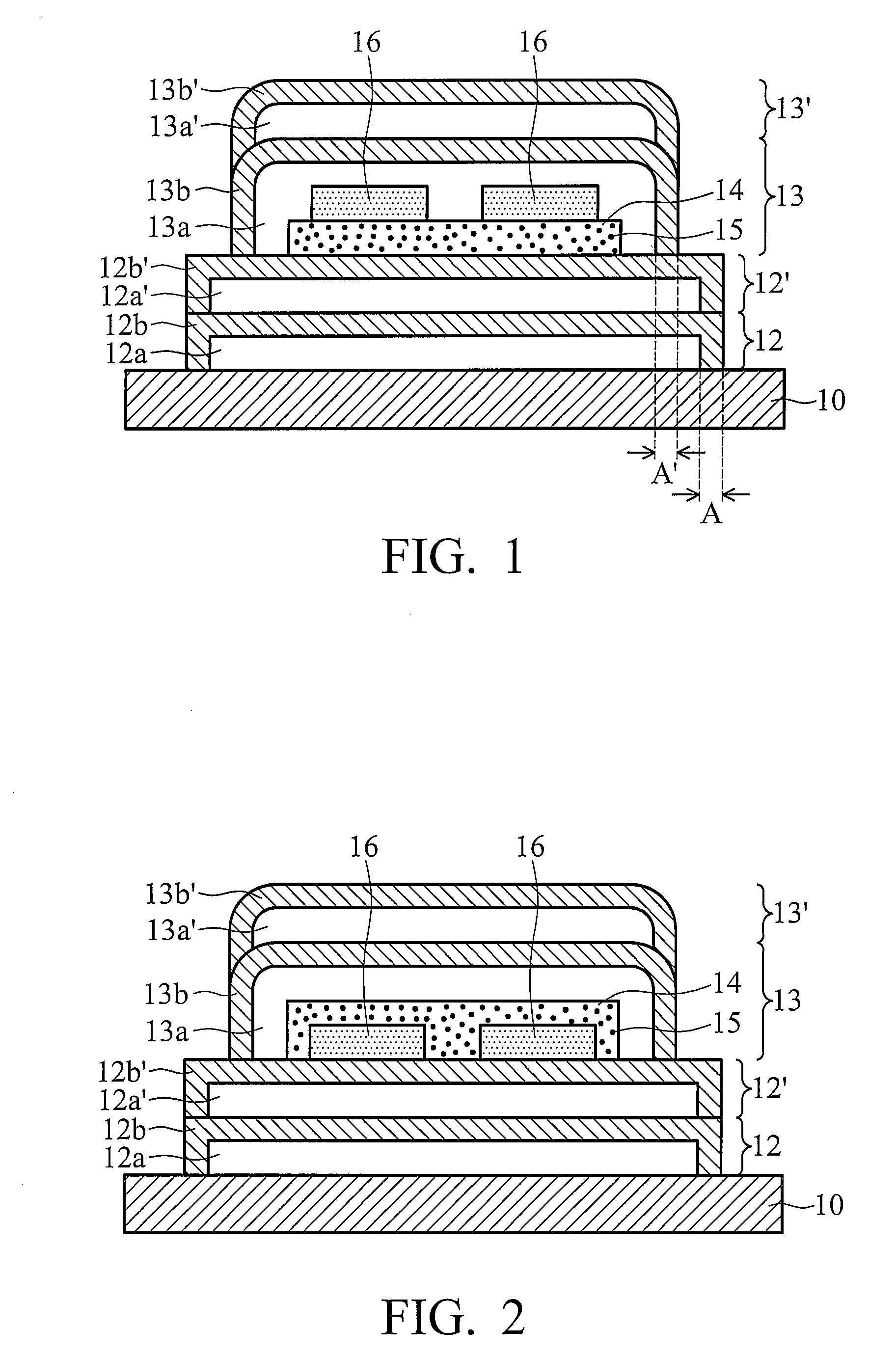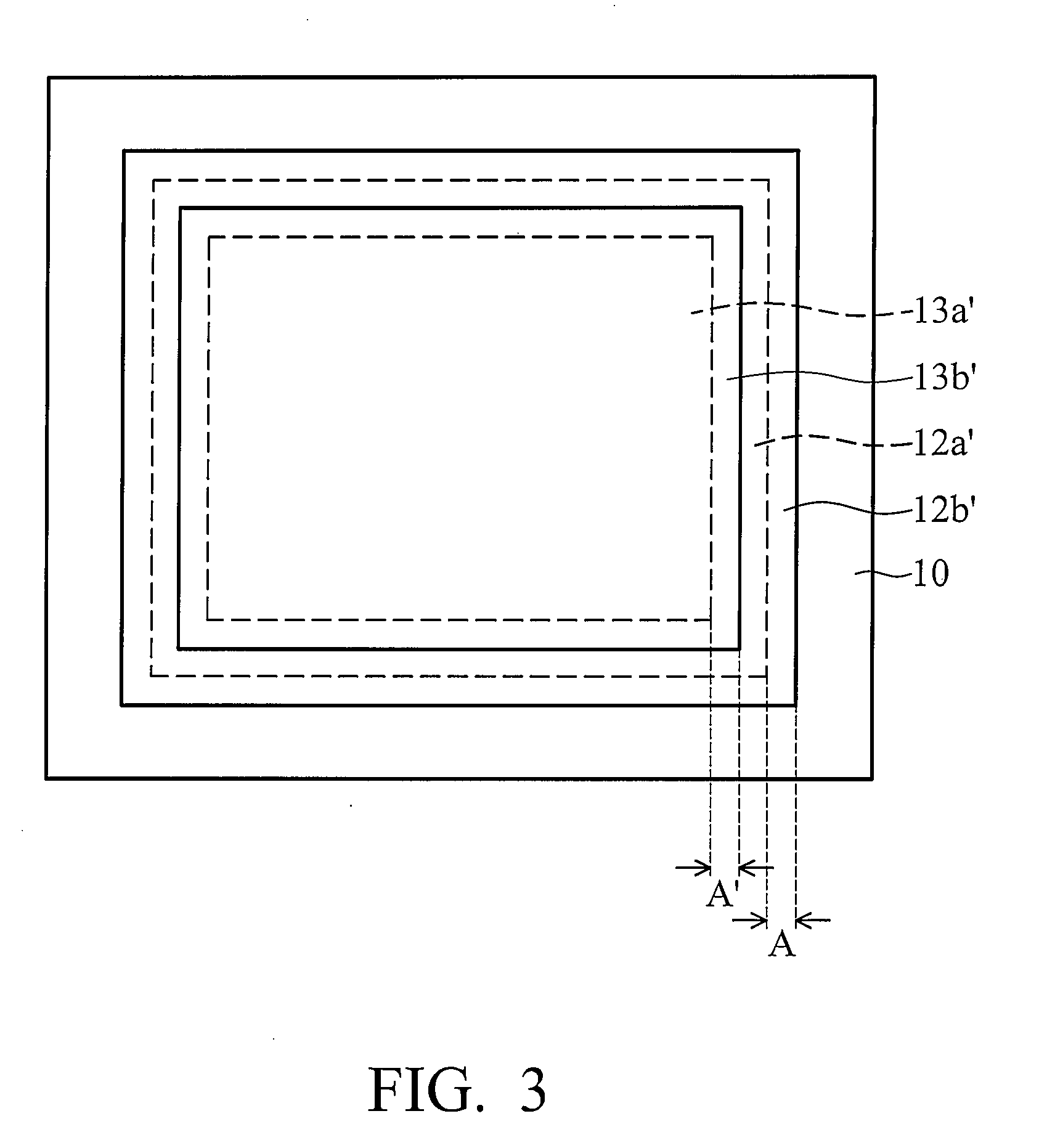Organic electroluminescent device
a technology of electroluminescent devices and organic materials, which is applied in the direction of luminescnet screens, vacuum obtaining/maintenance, discharge tubes, etc., can solve the problems of affecting the encapsulation of other elements, so as to effectively hinder the permeation of moisture and oxygen through the sidewalls
- Summary
- Abstract
- Description
- Claims
- Application Information
AI Technical Summary
Benefits of technology
Problems solved by technology
Method used
Image
Examples
embodiment 1
[0020]In embodiment 1 of the invention, the cross section of an organic electroluminescent device is shown as FIG. 1, wherein a getter layer 14 is disposed under an organic electroluminescent element 16. A substrate 10, such as plastic substrate or other flexible substrates, is first provided. Two barrier layers 12 and 12′ are formed on the substrate 10 by vacuum coating. FIG. 1 shows two barrier layers as an example, however one skilled in the art can readily appreciate that one or more than two barrier layers can be formed on the substrate.
[0021]First, an organic layer 12a is formed by vacuum vapor deposition, and then an inorganic layer 12b is formed by sputtering or chemical vapor deposition to completely cover the top and sidewall surfaces of the organic layer 12a forming the barrier layer 12. Next, an organic layer 12a′ and an inorganic layer 12b′ are formed on the above barrier layer 12 in sequence by the same method as barrier layer 12, to form a barrier layer 12′. The inorg...
embodiment 2
[0026]Referring to FIG. 2, it is a cross section of the organic electroluminescent device of the invention, wherein the getter layer 14 completely covers the top and sidewall surfaces of the organic electroluminescent element 16. The inorganic layers in the barrier layers of FIG. 2 are adjoined at the sidewalls of the barrier layers to hinder moisture and oxygen coming from passing through the sidewalls.
embodiment 5
[0027]Referring to FIG. 6, it is a cross section of the organic electroluminescent device of the invention. In addition to the getter layer 14 of FIG. 2, the organic electroluminescent device of FIG. 6 further comprises a getter layer 141 disposed between the organic electroluminescent element 16 and the barrier layer 12′. The getter layer 141 can adsorb the moisture and oxygen under the organic electroluminescent element 16. The composition and the coating method of the getter layer 141 can be the same as the forming of the getter layer 14.
PUM
 Login to View More
Login to View More Abstract
Description
Claims
Application Information
 Login to View More
Login to View More - R&D
- Intellectual Property
- Life Sciences
- Materials
- Tech Scout
- Unparalleled Data Quality
- Higher Quality Content
- 60% Fewer Hallucinations
Browse by: Latest US Patents, China's latest patents, Technical Efficacy Thesaurus, Application Domain, Technology Topic, Popular Technical Reports.
© 2025 PatSnap. All rights reserved.Legal|Privacy policy|Modern Slavery Act Transparency Statement|Sitemap|About US| Contact US: help@patsnap.com



